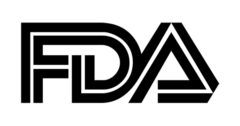
FDA Impact on U.S. Medical Technology Innovation, a study released in November 2010, was undertaken to provide a view of medical technology (medtech) industry’s experiences with the current FDA environment. The study addressed the need for quantitative and qualitative data to help evaluate the impact of U.S. medical device regulation on innovation and patients. The survey, which was prepared by researchers at Stanford University and led by Josh Makower, M.D., was designed with input from a variety of medical industry organizations and multiple state associations. Feedback was solicited from FDA, and Center for Devices and Radiological Health (CDRH) leaders provided input. FDA officials were given study results prior to public release of the findings, which have been commented upon widely by professional industry groups, the media and the director of the CDRH.
The report reflects responses from 204 public and venture-backed medtech company participants. This represents ~20% of the target innovator population in the U.S. Orthopaedics represented one of the largest clusters of participants. (Please refer to the study summary online for further details on methodology, limitations and disclosures. Details are found at the end of this review.)
The study sought to answer certain questions:
- Are concerns regarding process efficiency isolated, or widespread?
- What are the greatest deterrents to innovation within the premarket approval process? And at what costs (time and dollars) to medical device companies?
The following presents a snapshot of observations from study participants reporting on their experiences.
Observations on Regulatory Timelines:
- Premarket process for 510(k) devices: average 10 months from first filing to clearance; average 31 months from first communication to clearance
- Respondents’ experience in Europe: average 7 months from first communication to clearance to market same or equivalent device
- FDA’s reported 510(k) review time: average 3 months from receipt to final decision
- Premarket approval (PMA) devices: average 54 months to work with FDA from first communication to approval to market device (or to present)
- Respondents’ experience in Europe: average 11 months from first communication to CE Mark
- FDA’s reported PMA review time: average 9 months from filing to approval for all original PMAs
Observations on Efficiency:
- 44% of survey respondents reported untimely changes in key FDA personnel during product evaluation (e.g. companies required to retread covered ground; new reviewers with different expectations than former reps, etc.)
- 34% of respondents noted that appropriate FDA staff and/or physician advisors to FDA were not present at key meetings (e.g. non-practicing physicians used to augment FDA reviewers; surgeons from different medical background than product under review, etc.)
- Respondents noted that delays were linked to clinical trial-related disagreements with FDA, including definition of primary efficacy endpoints (27%), primary safety endpoints (15%), size of trial (12%), etc.
Observations on Performance:
- 93% of respondents agreed or strongly agreed that FDA has become more risk-averse to new products in the last 10 years
- 81% of respondents agreed or strongly agreed that FDA has difficulty dealing with novel technologies
- 66% of respondents expressed frustration that changes at FDA have had a strong negative impact on progress to market
Comparing FDA vs. EU:
- European authorities ranked higher than FDA in areas of clinical competence, engineering competence, statistical competence
- European authorities ranked higher than FDA in areas of predictability, reasonableness, transparency
- Of survey respondents, 75% rated the overall regulatory experience in EU as excellent or very good, while 16% gave same scores to FDA
Observations on Costs to Companies and Patients:
- Per survey data, every additional month spent in attempting to obtain an IDE costs ~$0.4MM per month for 510(k) product, >$0.7MM for PMA product
- Average total cost for 510(k) from concept to clearance ~$31MM ($24MM for FDA-dependent or related activities; does not include reimbursement or sales/marketing costs)
- Average total cost for PMA from concept to approval ~$94MM ($75MM for FDA-dependent or related activities; does not include reimbursement or sales/marketing costs)
- Devices available in U.S. an average of 2 years later than in Europe; patients are forced to pursue procedures overseas
Impacts:
- Patients forced to pursue procedures overseas
- Less transparency/predictability discouraging investors from medtech companies
- Escalating costs causing funds to flow out of medtech sector
- U.S. at risk of losing premier position at center of global innovation
- Medtech jobs moving offshore; every direct medtech job is reportedly indirectly responsible for another 4.47 jobs in the U.S. economy
Final Observation:
To promote public health, FDA must “impose reasonable regulatory requirements on new innovations, implement more balanced requirements for premarket and postmarket clinical data, and go back to leveraging market forces to reward technology that presents the greatest value to patients.”
REFERENCES
FDA Impact on U.S. Medical Technology Innovation: A Survey of Over 200 Medical Technology Companies. November 2010.
Annual Performance Report, Fiscal Year 2009. Office of Device Evaluation.
JAV
Julie A. Vetalice is ORTHOWORLD's Editorial Assistant. She has covered the orthopedic industry for over 20 years, having joined the company in 1999.




